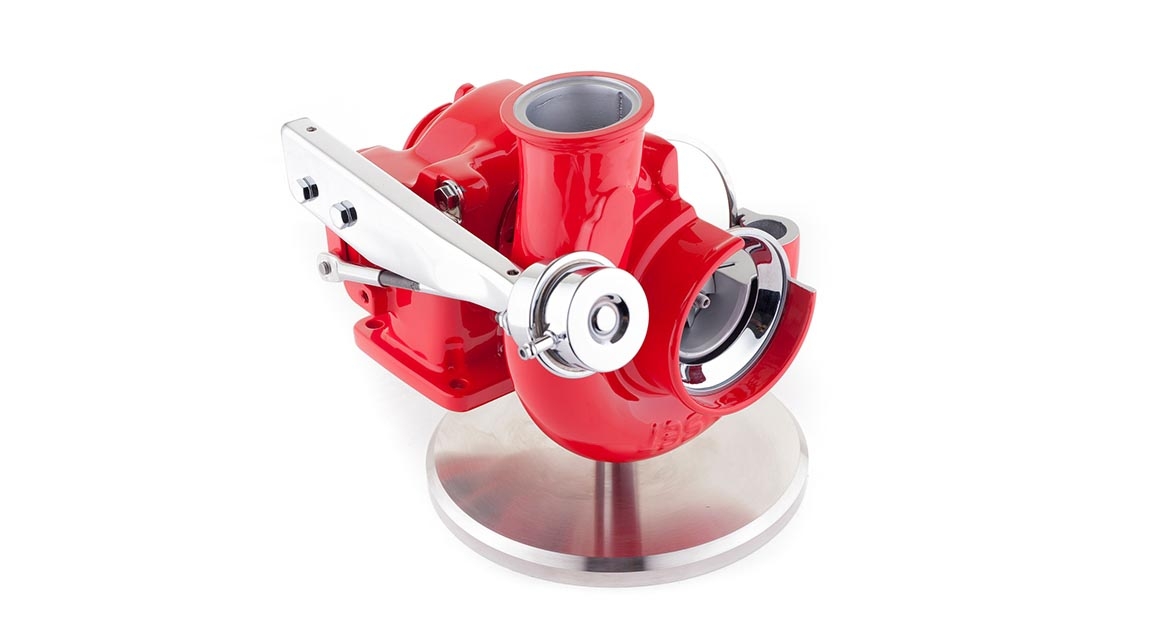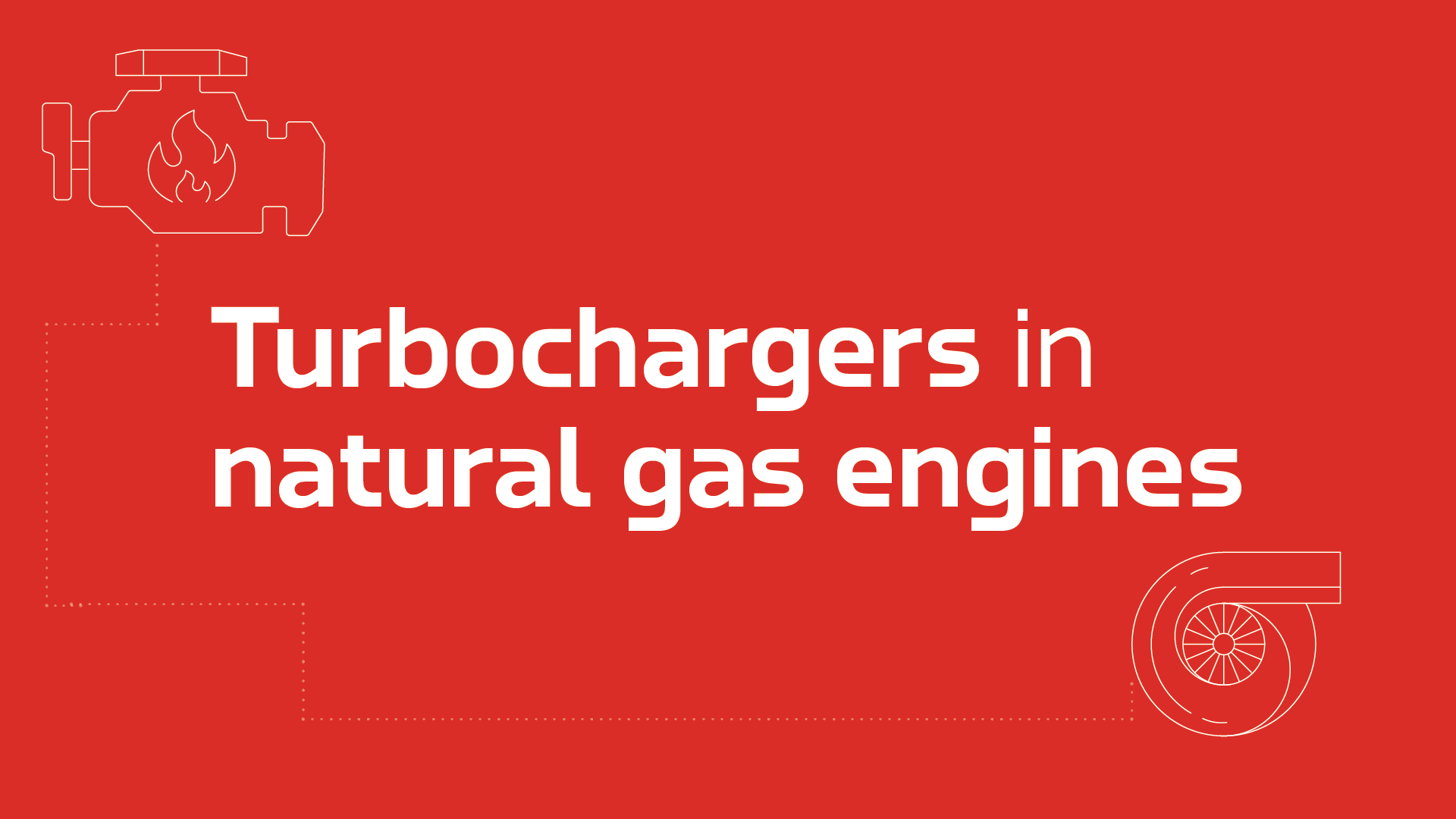How are turbochargers for natural gas different from those for diesel engines?
Key Takeaways:
- Turbochargers for natural gas engines have evolved significantly, driven by stringent emissions regulations and the adoption of stoichiometric burning.
- Modern natural gas turbochargers feature distinct components compared to their diesel counterparts.
- Cummins’ innovations in natural gas turbocharger design have improved the cost-effectiveness and environmental performance of natural gas engines.
By Cummins Components Business Unit

A decade ago, turbochargers for natural gas and diesel engines were not very different. However, new emissions regulations have driven the development of turbochargers specifically designed for natural gas engines. These turbochargers are adapted to stoichiometric burn conditions, where the mix of oxygen and fuel is precisely balanced. This balance ensures efficient combustion, leaving no unburnt fuel or excess oxygen.
Turbochargers developed for modern natural gas engines, have unique components like a dual wastegate port, larger actuators and a material housing made of composite materials that can withstand the higher temperatures a stoichiometric burn requires.
Cummins has spent decades developing innovative solutions for diesel and natural gas engines. This article explores how different turbocharger technologies are used for natural gas vehicles and how they have evolved to meet the challenges and demands of a transportation industry seeking more sustainable solutions.

Key differences between turbochargers for natural gas and diesel engines
Turbochargers for natural gas engines are distinct from those used in diesel engines due to the unique demands of natural gas combustion like higher operating temperatures and distinct air-to-fuel ratios. Unlike diesel engines, which operate with a lean burn and a higher air-to-fuel ratio, natural gas engines require a stoichiometric burn. This means the mixture of oxygen and fuel is balanced precisely (1:1 air-to-fuel ratio) for efficient combustion, ensuring no unburnt fuel or excess oxygen remains. Consequently, natural gas engines require smaller turbochargers since less air is needed for stoichiometric combustion compared to the leaner burn in diesel engines. For example, a diesel engine might need an HE500 turbo, but a natural gas engine could use an HE300 or HE400 due to its lower air requirements.
Achieving this efficient combustion has led to significant modifications in many system components, including the incorporation of a dual wastegate port to handle the high bypass capability necessary for natural gas turbochargers. This port regulates exhaust flow, controls pressure and prevents over-boost.
The intense temperatures and pressures of natural gas engines also influence turbocharger design. While diesel engines prioritize turbocharger efficiency, natural gas engines focus on achieving the required mass flow rate and meeting exhaust gas recirculation (EGR) demands. As a result, turbochargers for natural gas engines are built with high-temperature materials, particularly at the turbine stage, to resist thermal fatigue.
These turbochargers also require water-cooled bearing housings to manage the elevated temperatures, necessitating additional piping and connections to maintain coolant flow.
Housing Materials:
Cummins employs advanced materials in turbocharger construction to withstand the high temperatures of stoichiometric combustion in natural gas engines. These materials include graphite and stainless steel for the turbine housing, as well as higher-grade alloys like Chrome-Moly, which contains chromium and molybdenum. These materials allow the turbochargers to endure turbine inlet temperatures exceeding 760°C, far surpassing the operating temperatures of diesel engine turbochargers, which typically remain below 700°C.
Actuators:
Turbochargers for natural gas engines use larger actuators compared to those in diesel engines. A natural gas turbocharger uses a T4 actuator, which is 4 square inches, while a diesel engine turbocharger only requires a T2 actuator, a 2-square-inch component. This increase in actuator size is essential for managing the higher bypass capabilities and temperature demands of natural gas engines.
Modifications from diesel engines:
While natural gas engines share many components with their diesel counterparts, key modifications have been made to turbochargers to accommodate the use of gaseous fuel. These changes address the higher temperatures and different flow characteristics unique to natural gas, ensuring optimal performance and durability.
The evolution of the natural gas turbocharger
A decade ago, natural gas and diesel turbos were nearly identical, but stringent emissions regulations like Euro 6 and EPA standards have driven significant changes, including the shift to stoichiometric burning, which increased operating temperatures and created the need for new turbocharger configurations.
By shifting to stoichiometric burning, Cummins was able to reduce the need for aftertreatment systems like Diesel Oxidation Catalysts (DOCs) or Selective Catalytic Reduction (SCR) systems, which ultimately lowered the cost of the engines and turbos.
As a leader in turbocharger innovation and technology, Cummins is committed to working with customers to provide the right solutions for their applications. With Natural Gas being a critical player in decarbonizing commercial transportation, Cummins continues to optimize natural gas engine design, improve the economics of the engine systems while meeting strict emissions standards and make natural gas a competitive alternative to diesel in many applications.
Author Profiles
Related Topics
Related Tags